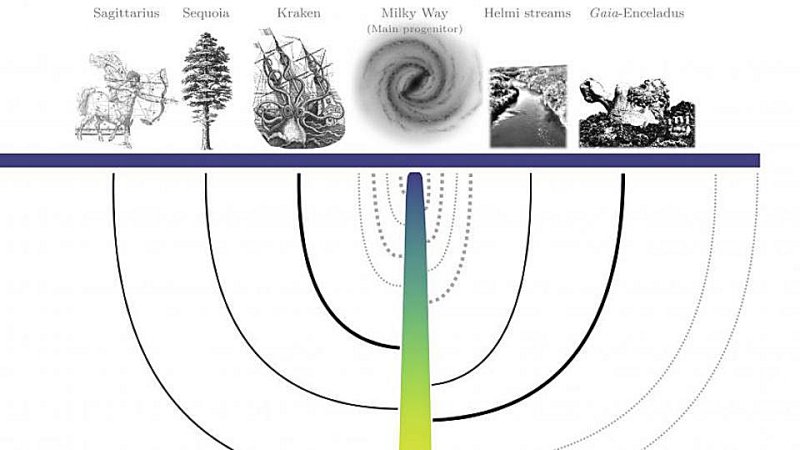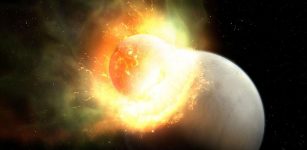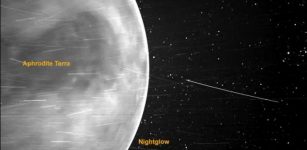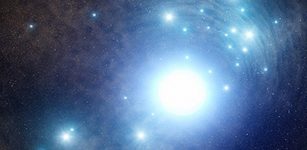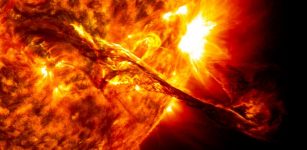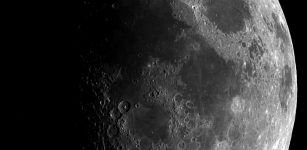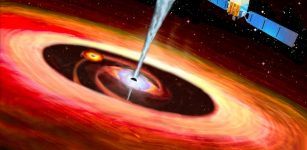Previously Unknown Collision Between Milky Way And Enigmatic Kraken Galaxies – Revealed
Eddie Gonzales Jr. – MessageToEagle.com – The first complete family tree of our home galaxy has been now reconstructed by astrophysicists led by Dr. Diederik Kruijssen at the Center for Astronomy at the University of Heidelberg (ZAH) and Dr. Joel Pfeffer at Liverpool John Moores University.
The team analyzed the properties of globular clusters orbiting the Milky Way with artificial intelligence.
Galaxy merger tree of the Milky Way inferred by applying the insights gained from the E-MOSAICS
Researchers developed a suite of advanced computer simulations (called E-MOSAICS) of the formation of Milky Way-like galaxies. Thus, they were able to relate the ages, chemical compositions, and orbital motions of globular clusters to the properties of the progenitor galaxies in which they formed, more than 10 billion years ago. By applying these insights to groups of globular clusters in the Milky Way, they could not only determine how many stars these progenitor galaxies contained, but also when they merged into the Milky Way.
“The main challenge of connecting the properties of globular clusters to the merger history of their host galaxy has always been that galaxy assembly is an extremely messy process, during which the orbits of the globular clusters are completely reshuffled,” Kruijssen explains.
“To make sense of the complex system that is left today, we, therefore, decided to use artificial intelligence. We trained an artificial neural network on the E-MOSAICS simulations to relate the globular cluster properties to the host galaxy merger history. We tested the algorithm tens of thousands of times on the simulations and were amazed at how accurately it was able to reconstruct the merger histories of the simulated galaxies, using only their globular cluster populations.”
Then, the researchers deciphered the merger history of the Milky Way, by using groups of globular clusters that are each thought to have formed in the same progenitor galaxy based on their orbital motion.
By applying the neural network to these groups of globular clusters, the researchers could not only predict the stellar masses and merger times of the progenitor galaxies to high precision, but it also revealed a previously unknown collision between the Milky Way and an enigmatic galaxy, which the researchers named “Kraken.”
“The collision with Kraken must have been the most significant merger the Milky Way ever experienced,” Kruijssen adds.
“Before, it was thought that a collision with the Gaia-Enceladus-Sausage galaxy, which took place some 9 billion years ago, was the biggest collision event. However, the merger with Kraken took place 11 billion years ago, when the Milky Way was four times less massive. As a result, the collision with Kraken must have truly transformed what the Milky Way looked like at the time.”
The team reconstructed the first complete merger tree of our Galaxy. The Milky Way cannibalized about five galaxies with more than 100 million stars, and about fifteen with at least 10 million stars. The most massive progenitor galaxies collided with the Milky Way between 6 and 11 billion years ago.
“The debris of more than five progenitor galaxies has now been identified. With current and upcoming telescopes, it should be possible to find them all,” Kruijssen concludes.
Written by Eddie Gonzales Jr. – MessageToEagle.com Staff

